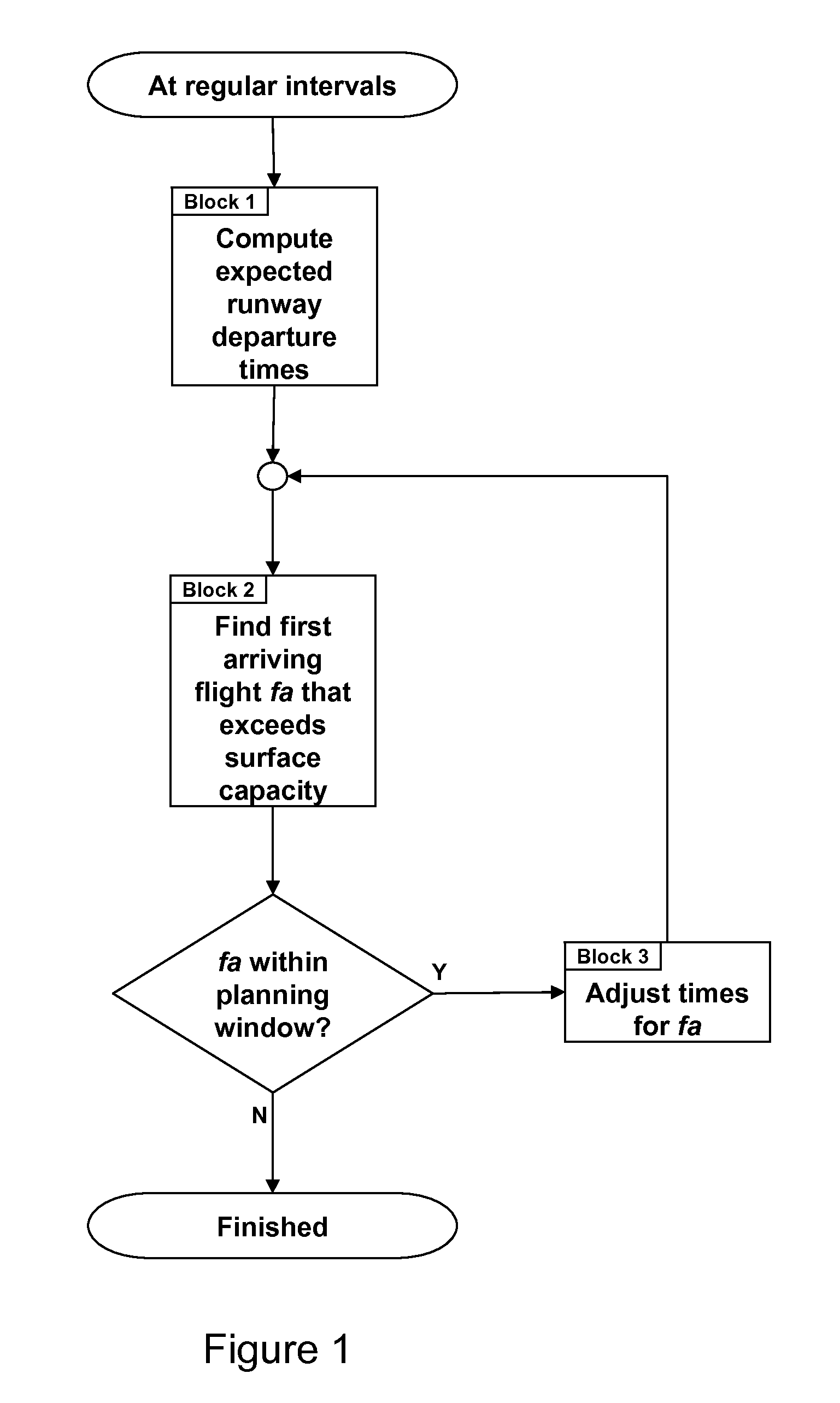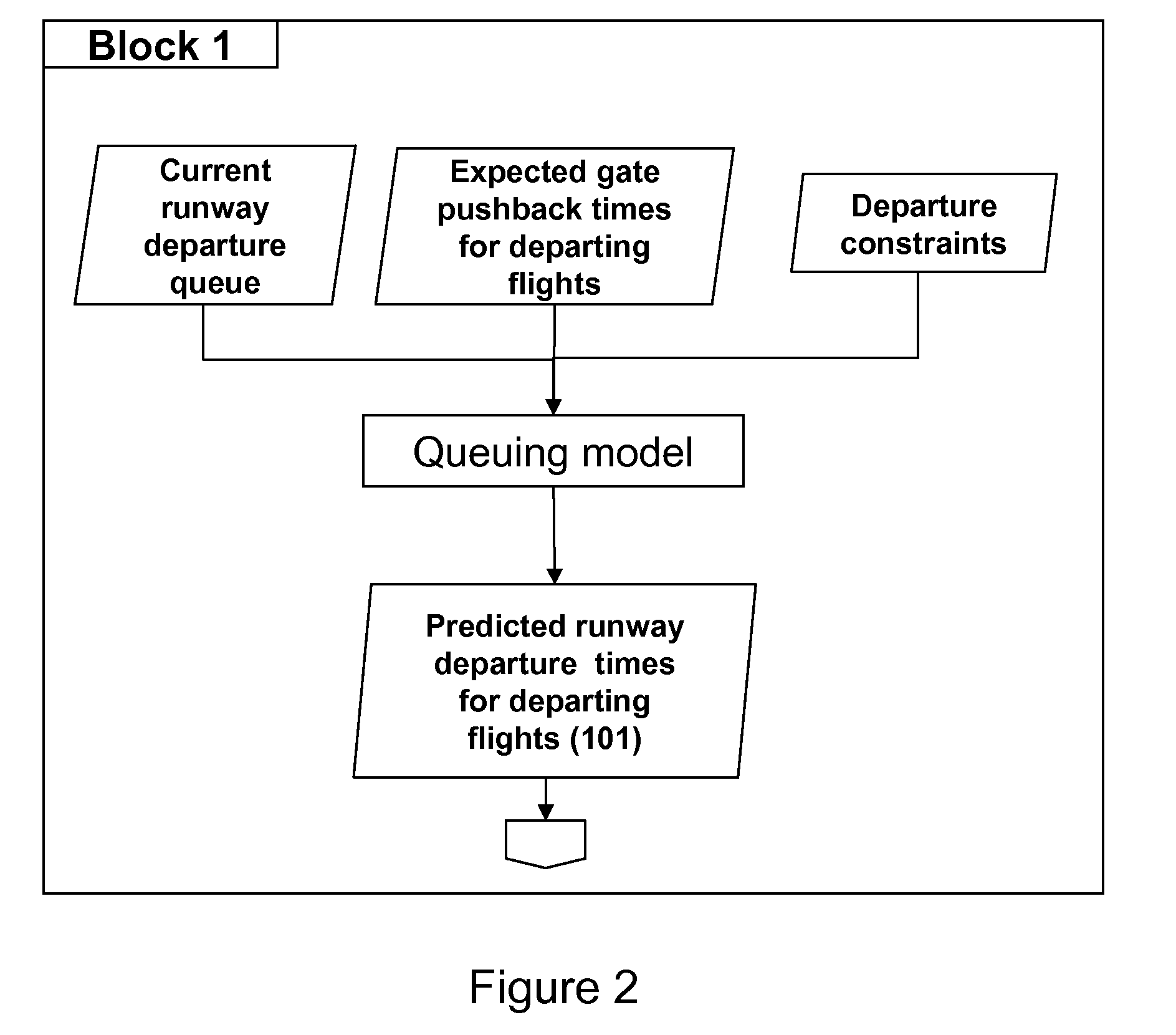Airport Demand Management Method
a demand management and airport technology, applied in the field of airport demand management methods, can solve the problems of not being organized and synchronized in arrival and departure flights, and the potential to exceed the available resources
- Summary
- Abstract
- Description
- Claims
- Application Information
AI Technical Summary
Benefits of technology
Problems solved by technology
Method used
Image
Examples
Embodiment Construction
[0011]In one embodiment of the present invention, as illustrated in FIG. 1, the total flight count on the surface of the airport is kept below a threshold. In this embodiment the runway departure time for each planned departure flight is estimated (details presented in the diagram for Block 1). Then the future flight operations (arrivals and departures) are evaluated to see if any flight will cause the accumulated airport flight count to exceed the surface capacity within a reasonable planning window (details presented in the diagram for Block 2). If a flight will, then the operating times for the flight are adjusted to keep the airport within capacity (details presented in the diagram for Block 3) and the revised plans are re-evaluated to see if capacity is exceeded by a later flight. This process iterates until no more problems are predicted within a reasonable planning window.
[0012]In one embodiment, as in Block 1 of FIG. 2, the current state of flights awaiting runway departure,...
PUM
 Login to View More
Login to View More Abstract
Description
Claims
Application Information
 Login to View More
Login to View More - R&D
- Intellectual Property
- Life Sciences
- Materials
- Tech Scout
- Unparalleled Data Quality
- Higher Quality Content
- 60% Fewer Hallucinations
Browse by: Latest US Patents, China's latest patents, Technical Efficacy Thesaurus, Application Domain, Technology Topic, Popular Technical Reports.
© 2025 PatSnap. All rights reserved.Legal|Privacy policy|Modern Slavery Act Transparency Statement|Sitemap|About US| Contact US: help@patsnap.com



